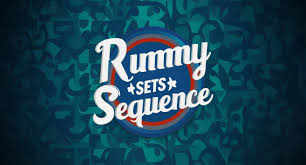Rummy Set Sequence, is a popular card game that combines strategy, skill, and a bit of luck. One of the core elements of rummy is the formation of sets and sequences, which are crucial for declaring and winning the game. This article will delve into what sets and sequences are, how they are formed, and their importance in rummy gameplay.
What is a Set?
A set is a group of three or four cards of the same rank but different suits. For example, if you have three Kings from different suits (♠, ♥, ♦), that constitutes a set. Sets can be of two types:
- Three-card set: Three cards of the same rank (e.g., 7♠, 7♦, 7♥).
- Four-card set: Four cards of the same rank (e.g., 10♠, 10♦, 10♥, 10♣).
Example of a Set:
- 7♠, 7♦, 7♥ (Three-card set)
- J♣, J♦, J♥, J♠ (Four-card set)
What is a Sequence?
A sequence (or run) is a group of three or more consecutive cards of the same suit. For instance, a sequence can be formed with cards like 4♠, 5♠, and 6♠.
Example of a Sequence:
- 3♦, 4♦, 5♦ (Three-card sequence)
- 10♣, J♣, Q♣ (Three-card sequence)
Important Note:
In rummy, a sequence can also be classified into two types:
- Pure Sequence: A sequence without any jokers (e.g., 5♣, 6♣, 7♣).
- Impure Sequence: A sequence that includes at least one joker (e.g., 4♥, 5♥, Joker).
Importance of Sets and Sequences
- Winning the Game: To declare your hand in rummy, you need to form at least one pure sequence and additional sets or sequences. The standard requirement is often two sequences, one of which must be pure.
- Strategic Play: Understanding how to form sets and sequences can significantly enhance your gameplay strategy. Knowing which cards to keep and which to discard is essential for optimizing your chances of winning.
- Card Tracking: Keeping track of which cards have been picked or discarded can help you anticipate your opponents’ strategies, allowing you to make informed decisions about your own hand.
Tips for Forming Sets and Sequences
- Prioritize Pure Sequences: Always aim to form a pure sequence first, as it is crucial for declaring your hand.
- Observe Opponents: Pay attention to the cards your opponents are picking and discarding. This can give you clues about their potential sets and sequences.
- Use Jokers Wisely: Jokers can complete sets and impure sequences. Use them strategically to enhance your hand without relying solely on them.
- Discard Wisely: When discarding cards, avoid giving away cards that might help your opponents form their sets or sequences.
Conclusion
Understanding sets and sequences is fundamental to mastering rummy. By focusing on forming these combinations effectively, you can improve your gameplay and increase your chances of winning. Whether you’re a beginner or an experienced player, honing your skills in creating sets and sequences will lead to a more enjoyable and successful rummy experience. So grab your cards, practice your strategies, and enjoy the thrill of rummy.




